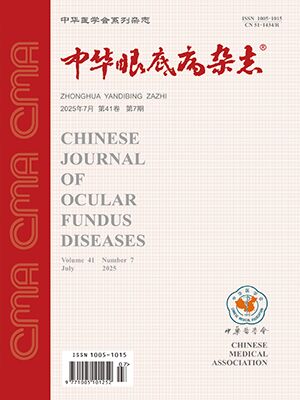Objective To observe the clinical characteristics and efficacy of laser photocoagulation of aggressive posterior retinopathy of prematurity (AP-ROP). Methods Twenty-eight eyes of 14 infants with AP-ROP from May 2008 to December 2010 were enrolled in this study. The infants were examined using RetCam photography and indirect ophthalmoscopy. Among the 28 eyes, 24 eyes were classified as zone one and 4 eyes zone two. All eyes were treated within 24 hours using binocular indirect ophthalmoscope and laser photocoagulation. The initial energy was 200 mW, using energy was 200 -500 mW, exposure time was 200 ms. Every two photocoagulation spot was linked together, but no overlap. Follow-up ranged from 3 to 24 months, with a mean of 11.5 months. The retinal bloods, the iris surface vessels, the fiber hyperplasia on retina, retinal detachment or ruffle form were observed. ResultsTwentyfive of 28 eyes (89.3%) recovered or were classified as control; 1 of 28 eyes (3.6%) was suffered retinal detachment one month after treatment. The detachment was resolved through vitrectomy surgery. Two of 28 eyes (7.1%) did poorly. The parents gave up treatment resulting in loss of vision. No treatment-related complications were observed during the follow-up period, such as damage to cornea, iris and lens. ConclusionPhotocoagulation is a safe and effective way to treat most AP-ROP.
Citation: 李松鹤,高玉先,董宇. Clinical characteristics and treatment of aggressive posterior retinopathy of prematurity in 14 patients. Chinese Journal of Ocular Fundus Diseases, 2012, 28(1): 37-40. doi: Copy
Copyright © the editorial department of Chinese Journal of Ocular Fundus Diseases of West China Medical Publisher. All rights reserved




